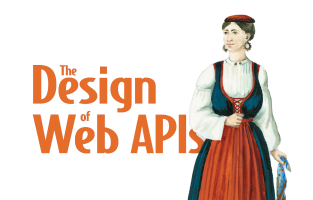
The 15 rules of the OpenAPI-based tools club
By Arnaud Lauret, June 1, 2022
The OpenAPI Specification can facilitate everyone’s life and participate in the creation of better APIs and a better API ecosystem. But it will work only if the members of the OpenAPI-based tools club follow the rules.

The 3 benefits of creating OpenAPI-based tools (the right way)
By Arnaud Lauret, May 25, 2022
Supporting The OpenAPI Specification (fka. Swagger Specification) format when creating Web API tools is a must-have. Not for the sake of the format itself but rather because of the benefits you’ll get from it. But those benefits will come only if OpenAPI is used the right way.

What is the OpenAPI Specification?
By Arnaud Lauret, May 18, 2022
OpenAPI, or the OpenAPI Specification, formerly known as the Swagger Specification, is a machine-readable and human-friendly API description format. That short description is correct but does not help to understand what it is OpenAPI: it’s the Rosetta Stone of the Web API world. Let’s see why.

Internal/private APIs and money Series - Part 3
Why monetizing and crowdfunding internal/private APIs?
By Arnaud Lauret, May 11, 2022
Jumping into the API-first train, even only focusing on private/internal APIs, will have an impact on budgets. Organizations need to find ways to redistribute budgets in order to enable any team that needs to provide APIs to do it in the best possible conditions. Is monetizing private/internal API the solution? Would crowdfunding private make sense?

Internal/private APIs and money Series - Part 2
When internal API development and hosting costs collide with API-First strategy
By Arnaud Lauret, April 27, 2022
An often unintended consequence of an internal API-first strategy is having teams with not much IT jumping, willingly or not, in the API train. That inevitably will raise budget questions which answers will determine the success of the API-first strategy.

Twitter API v2 Tips and Tricks Series
Rendering simple text tweets with their authors
By Arnaud Lauret, April 25, 2022
Let’s learn to use Twitter v2 API tweets lookup operations to render simple text tweets and their author just like Twitter does. We’ll learn a few things about API design and API documentation in general and Postman based API documentation in particular in the making. I hope this will give you some ideas for the design and documentation of your API.

Internal/private APIs and money Series - Part 1
When internal API platform billing model collides with API-First strategy
By Arnaud Lauret, April 20, 2022
An internal API-first strategy will inevitably raise budgets questions; you must be aware of that. One of them is who will pay for the brand new API platform and how? The success of an internal API-first strategy may depend on the billing model of the API platform.

What is an API platform and what skills are needed to build it
By Arnaud Lauret, April 13, 2022
LEGO is looking for an associate API Engineer for their API platform. LEGO+APIs! That looks awesome! But what is an API platform and what skills do you need to build it? Does the LEGO job offer list them all? Do you have them all? This post answers those questions and may help you apply to such offers or post the appropriate job offers to build your own API platform.

Postman Tips and Tricks Series
How to use Bootstrap in Postman Visualizer
By Arnaud Lauret, April 11, 2022
Postman Visualizer is perfect to tinker with data returned by an API and learn how it works. I found using HandlebarJS HTML templates quite convenient. But I was mindblown when I realized I could take advantage of Bootstrap to generate outstanding visualization without much effort. Let’s see that with The 5th Edition Dungeons and Dragons API in its GraphQL version.

Choosing a public API style when a private API style already exists
By Arnaud Lauret, April 6, 2022
“What will be the style of our public/partner APIs? Should we reuse our existing private APIs style? Should we restart from scratch and use a totally different style?” This discussion happens quite often in organizations starting their public API journey (and if it did not happen, it must happen.) This discussion can have important consequences that must be carefully evaluated.
